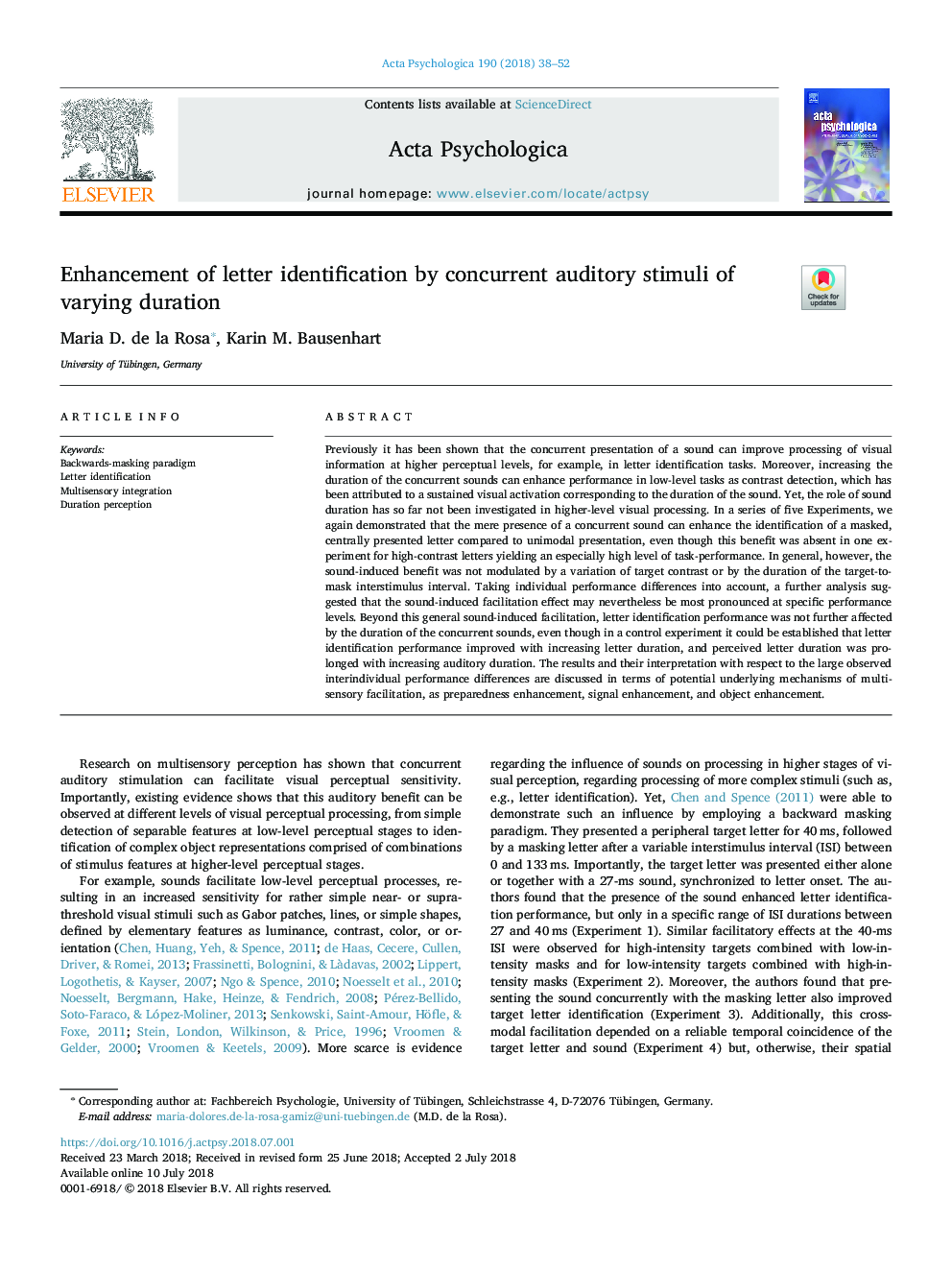| Article ID | Journal | Published Year | Pages | File Type |
|---|---|---|---|---|
| 7276467 | Acta Psychologica | 2018 | 15 Pages |
Abstract
Previously it has been shown that the concurrent presentation of a sound can improve processing of visual information at higher perceptual levels, for example, in letter identification tasks. Moreover, increasing the duration of the concurrent sounds can enhance performance in low-level tasks as contrast detection, which has been attributed to a sustained visual activation corresponding to the duration of the sound. Yet, the role of sound duration has so far not been investigated in higher-level visual processing. In a series of five Experiments, we again demonstrated that the mere presence of a concurrent sound can enhance the identification of a masked, centrally presented letter compared to unimodal presentation, even though this benefit was absent in one experiment for high-contrast letters yielding an especially high level of task-performance. In general, however, the sound-induced benefit was not modulated by a variation of target contrast or by the duration of the target-to-mask interstimulus interval. Taking individual performance differences into account, a further analysis suggested that the sound-induced facilitation effect may nevertheless be most pronounced at specific performance levels. Beyond this general sound-induced facilitation, letter identification performance was not further affected by the duration of the concurrent sounds, even though in a control experiment it could be established that letter identification performance improved with increasing letter duration, and perceived letter duration was prolonged with increasing auditory duration. The results and their interpretation with respect to the large observed interindividual performance differences are discussed in terms of potential underlying mechanisms of multisensory facilitation, as preparedness enhancement, signal enhancement, and object enhancement.
Related Topics
Life Sciences
Neuroscience
Cognitive Neuroscience
Authors
Maria D. de la Rosa, Karin M. Bausenhart,
